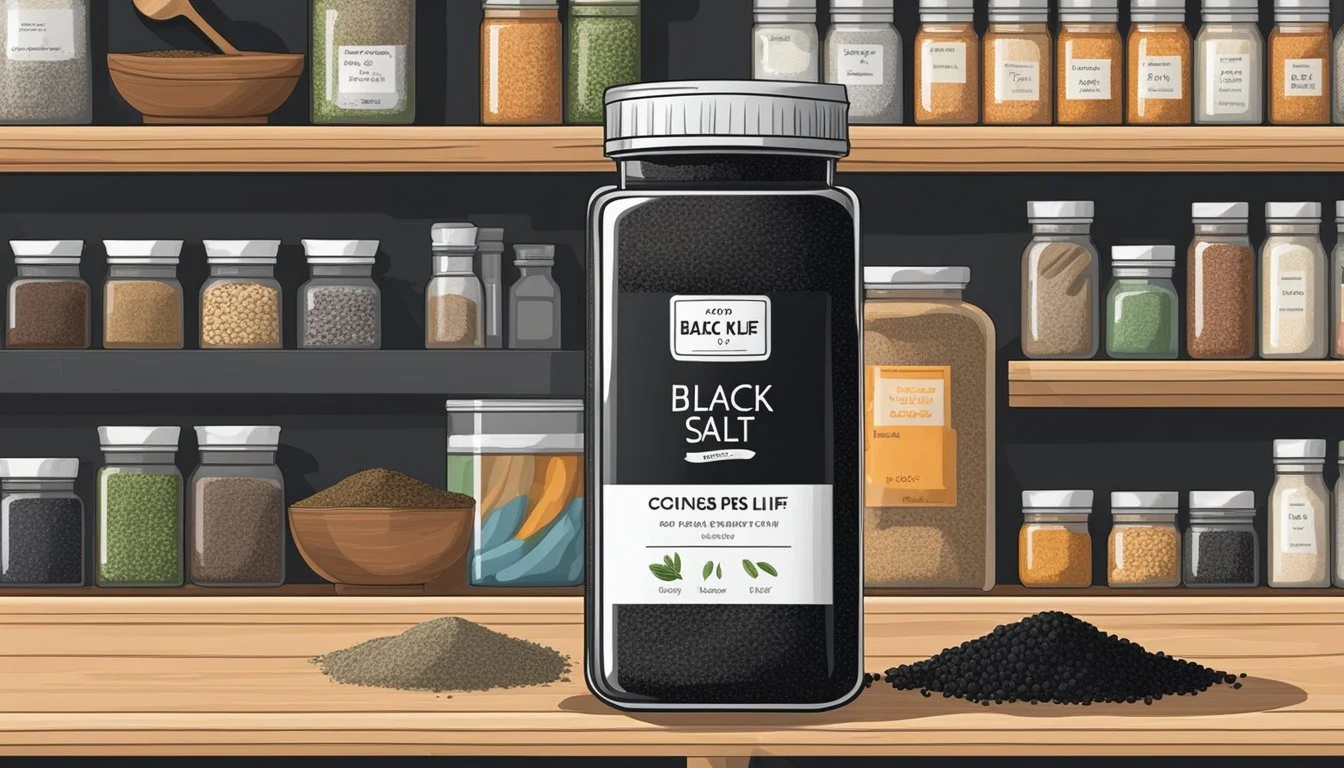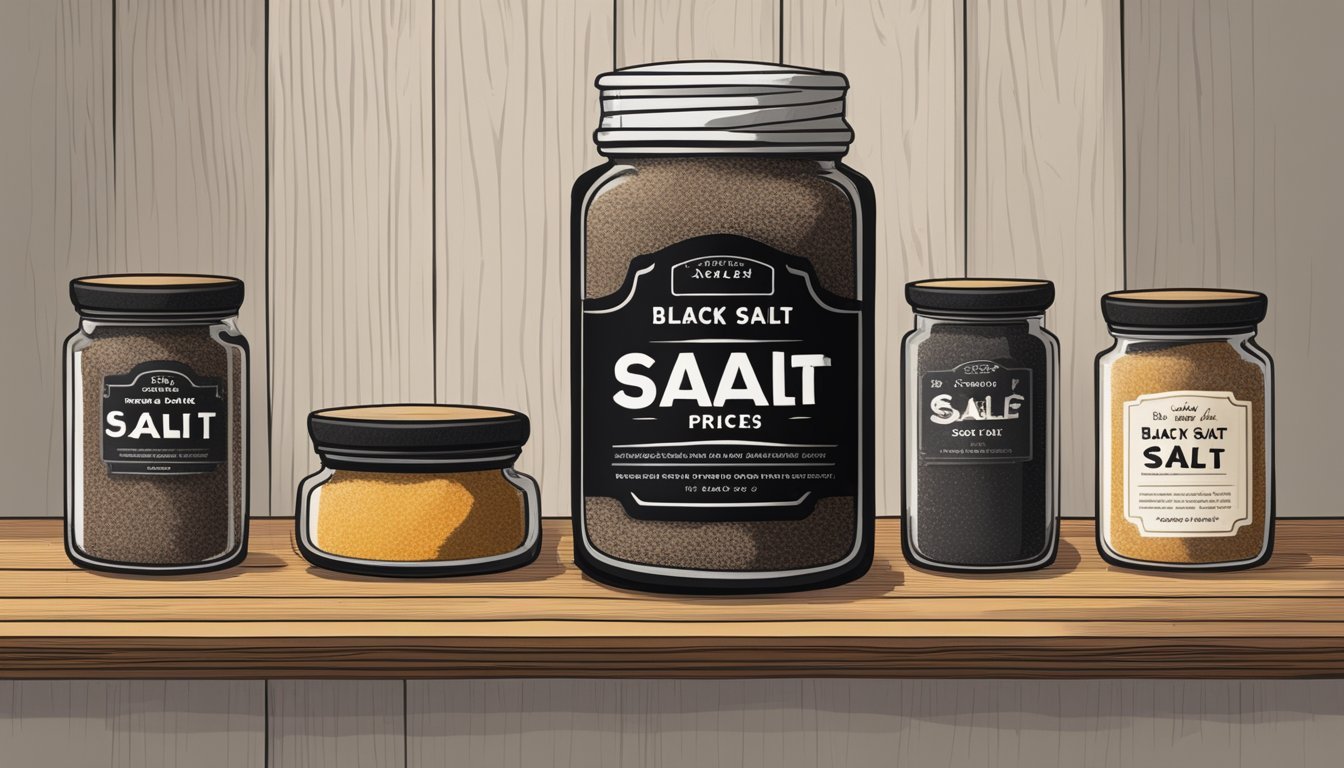How Long Does Black Salt Last?
Shelf Life and Storage Tips
Black salt, which comes in different forms such as black ritual salt, black lava salt, and black Indian salt, is prized not just for its distinctive flavor but also for its purported health benefits. The shelf life of black salt, like that of its common white counterpart, is virtually indefinite when stored properly. Proper storage means keeping the salt in a cool, dry environment away from moisture, which could lead to clumping or a change in texture due to the salt's hygroscopic nature.
Different types of black salt may contain various additives, such as activated charcoal in the case of black lava salt, or herbs and spices that are often mixed into black ritual salt. While these ingredients can add to the flavor and potential health benefits, they do not alter the intrinsic lasting power of the salt itself.
It is worth noting that some black salt products may come with 'best before' dates, which typically refer to the optimal quality period rather than safety. Even after these dates have passed, the salt remains safe for consumption. This is due to salt's inherent properties that do not support microbial growth, ensuring that it does not spoil.
Understanding Black Salt
Black salt, commonly known by several names, plays a pivotal role in culinary and health contexts within certain cultures. Primarily sourced from the Himalayan region, its unique composition contributes to its distinctive properties.
Origins and Types
Black salt is extensively harvested in South Asia, primarily in India, Pakistan, Bangladesh, and Nepal. There are a few notable types of black salt: kala namak or Himalayan black salt, black lava salt, and black ritual salt—each with distinct sourcing and processing methods.
Kala Namak: Often found in India, it is a kiln-fired rock salt (how long does rock salt last?) typically used in South Asian cuisine.
Black Lava Salt: Mainly from Hawaii or Cyprus, it includes activated charcoal, imparting the characteristic dark hue.
Black Ritual Salt: Used in various spiritual practices, it is not intended for consumption.
Composition and Minerals
Kala namak, or Himalayan black salt, contains a unique combination of minerals, primarily sodium chloride, and trace amounts of other elements contributing to its characteristic color and flavor profile. The presence of sulfur compounds is responsible for its pungent smell.
Mineral Content:
Mineral Presence in Black Salt Sodium Chloride Predominant compound Iron Contributes to color Magnesium Beneficial for health Calcium Adds to nutritional value Potassium Essential for body functions
Its mineral-rich nature includes beneficial amounts of calcium, magnesium, potassium, and iron—elements that play vital roles in bodily functions. Each contributes to the overall health benefits associated with the consumption of black salt.
Shelf Life and Storage
When considering black salt, its indefinite shelf life and the absence of a true expiration date stand out. However, factors like moisture can affect its quality over time. Employing proper storage methods is crucial to maintaining its integrity.
Factors Affecting Shelf Life
The main adversary to the shelf life of black salt is moisture. Exposure to moisture can lead to clumping and may eventually compromise the salt's quality. Although black salt doesn't spoil, it can lose its potency and distinct aroma if not stored correctly. Contrary to table salt, black salt could contain trace minerals and organic compounds that may react with moisture or other environmental factors, subtly altering its flavor over time.
Proper Storage Methods
To ensure that black salt retains its quality for as long as possible, it should be stored in a cool, dry environment such as a pantry. Black salt should be kept in an airtight container to prevent moisture from seeping in. The use of silica gel packets in the storage container can help absorb any excess moisture. It's beneficial to keep black salt away from direct sunlight and heat sources, which can also affect its quality. By following these storage guidelines, one can ensure that the salt remains dry and free from contaminants, thus preserving its intended flavor and quality for future use.
Health and Nutritional Aspects
Black salt, often sourced from Himalayan regions, has been recognized for its potential health benefits as well as its distinctive flavor profile. It is considered a staple in Ayurvedic medicine and believed to aid in various health conditions.
Benefits of Black Salt
Black salt, known for its sulfuric aroma and earthy flavor, is often used in Ayurvedic medicine, attributed with therapeutic properties. One may find claims that it can help improve digestive issues and enhance thyroid function due to its trace mineral content. It is also considered to have lower sodium levels than regular table salt, potentially offering a better alternative for individuals with high blood pressure. The presence of small amounts of potassium in black salt can contribute to overall heart health.
Digestive aid: Believed to promote bile production, black salt could improve digestion.
Thyroid health: Potassium content may support thyroid health in those who have iodine-sensitive conditions.
Potential Health Risks
While black salt's unique mineral composition proposes several health benefits, excessive intake carries potential health risks, primarily due to its sodium content. High consumption of sodium may lead to elevated blood pressure levels, increasing cardiovascular risk. Although containing less sodium than conventional salts, moderation remains crucial. Some sources of black salt may lack sufficient levels of iodine, making it essential to ensure iodine intake from other dietary sources for proper thyroid function. Overconsumption might also lead to conditions such as fluorosis, due to high fluoride content found in some varieties of black salt.
High sodium intake: Can lead to increased blood pressure and associated health issues.
Iodine deficiency: May occur if black salt is the primary salt used, as it typically contains less iodine than iodized table salt.
Fluoride content: High levels might increase the risk of fluorosis, affecting teeth and bone health.
Culinary Uses and Tips
Black salt, known for its unique sulfurous aroma and flavor, is a staple in South Asian cuisine and vegan cooking. It is appreciated not only for its taste but also for its potential health benefits compared to regular table salt.
Cooking with Black Salt
When incorporating black salt into dishes, it's essential to consider how its egg-like flavor can transform vegan recipes. Black salt is a game-changer in plant-based cooking, offering a simple way to mimic the taste and aroma of eggs.
Tofu Scramble: A pinch of black salt can make a tofu (how long does tofu last?) scramble taste incredibly similar to scrambled eggs.
Salad Dressings: Use it sparingly to add a punch to vegan Caesar dressings.
Snacks: It works well sprinkled on popcorn or chips for an extra depth of flavor.
The texture of black salt varies depending on its form; it can be ground into a fine powder or used in its rock form for a more intense burst of flavor when bitten into. It is best to add black salt at the end of cooking to preserve its unique taste because heat can dissipate its flavor.
Comparing Different Salts
When comparing black salt to other types of salt, it is essential to consider their origins and characteristics.
Type of Salt Origin Characteristics Table Salt Mined from salt deposits Fine texture, usually iodized to prevent iodine deficiency Sea Salt (how long does sea salt last?) Evaporated from sea water Coarser texture, may contain trace minerals Kosher Salt (how long does kosher salt last?) Mined or sea water origin Coarse texture, less refined, popular in cooking for its ability to draw out moisture from meat Himalayan Pink Salt (how long does himalayan pink salt last?) Himalayan Mountain Range Pink hue due to trace minerals, often found in rock form
Black salt differs significantly from iodized salt (how long does iodized salt last?), which is table salt mixed with a minute amount of various salts of the element iodine. While black salt is a complex mineral compound, Himalayan pink salt is a purer form of rock salt with mineral impurities that give it a pink color. Kosher salt and sea salt are preferred in cooking for their texture and flavor, but black salt is chosen for its distinct taste, which is not found in other salts.
Safety and Quality Considerations
When considering the longevity and safety of black salt, it’s imperative to be aware of expiration indications and potential contamination risks. These factors affect both its quality and suitability for consumption.
Expiration and Quality Indicators
Black salt, unlike regular table salt, can have a definite expiration date, especially when it contains additives like anti-caking agents or iodine. Quality indicators for black salt may include changes in color, texture, or smell. If black salt appears moist, lumpy, or has any sign of discoloration, this may suggest deterioration, typically due to exposure to moisture or improper storage.
Moisture: Causes salt to clump, which can indicate degradation.
Color: Significant color changes might signal that the salt should be discarded.
Odor: Any off smells are a clear indicator that the black salt may have expired.
Contamination and Food Safety
Black salt must be stored correctly to prevent contamination that can lead to foodborne illness. Contaminants such as bacteria, bugs, and other microbes can invade any type of food product if not stored in an airtight container and in a cool, dry place.
Bacteria and Microbes: Can proliferate in conditions where food products are not properly sealed or kept.
Physical Contaminants: Bugs or dust might infiltrate improperly stored salt, compromising its purity.
Food safety practices should always be considered when using black salt to ensure it remains free from harmful elements. Although salt is not typically a hospitable environment for bacteria due to its high mineral content and low moisture, additives in black salt may reduce its natural preservative qualities, necessitating diligent attention to storage and handling.
Purchasing and Sustainability
When considering the purchase of black salt, one must weigh factors like the sourcing quality and the environmental impact of its production. It's crucial to choose sustainable options to minimize ecological footprints.
Where to Buy High-Quality Salt
Consumers should look for reputable vendors that supply high-quality black salt. Specialty spice shops, health food stores, and online marketplaces are common points of purchase. It is important to verify the authenticity and purity of the salt, as this reflects on both the taste and the sustainability of sourcing practices. The consumer's aim should be to find sellers that offer transparent information about the origin and processing of their salt.
Specialty Spice Shops: Known for curated selections, they often provide information about the salt's source.
Health Food Stores: These stores usually prioritize stocking products from sustainable sources.
Online Marketplaces: Websites may offer a wide range of options, but one should check vendor reviews and product certifications.
Environmental Impact
The extraction and production methods of black salt can have varied environmental footprints. Responsible consumers should research how their purchasing choices affect the environment and aim for options that promote sustainability. The use of natural resources, energy consumption, waste generation, and transportation all contribute to the environmental impact. Sustainable practices may include:
Minimized Waste: Using eco-friendly packaging and reducing waste in the production process.
Energy Efficiency: Favoring salts from operations that utilize renewable energy sources.
Transportation: Considering the carbon footprint linked to the transportation of the salt from the source to the store.
Selecting black salt with care can contribute positively to environmental sustainability and support the well-being of both the planet and its inhabitants.
Miscellaneous
In this section, the reader will gain insights into the diverse applications and rich heritage of black salt beyond culinary uses.
Non-Culinary Uses of Black Salt
Black salt, known for its distinctive flavor and color, has applications that extend past the kitchen. It is sometimes included in bath salt formulations for its purported therapeutic properties, such as aiding in digestion and acting as a laxative. In some cultures, black lava salt and black ritual salt, often associated with charcoal and sulfides, are used in purifying practices due to their strong odor and cleansing associations.
Bath salts: Black salt's mineral content can be revitalizing in bath salts, potentially aiding in detoxification and relaxation.
Cleansing rituals: Ritual uses leverage black salt's color and composition, symbolizing protection and cleansing against negativity.
Cultural and Historical Significance
The significance of black salt stretches into the cultural and historical tapestry of regions like India. It has been used in Ayurveda, a traditional form of Indian medicine, where it is valued for its potential digestive benefits and ability to enhance food flavors. The history of black salt is deeply interwoven with local traditions and culinary practices.
Ayurvedic medicine: Black salt is traditionally used for its potential benefits as a digestive aid and as a component in Ayurvedic remedies.
Indian cuisine: It is a staple seasoning in many Indian food (What wine goes well with Indian food?) products, contributing to a unique taste profile cherished in the country’s culinary culture.








